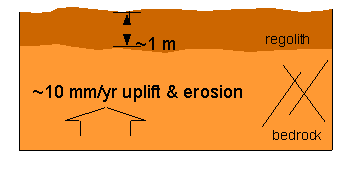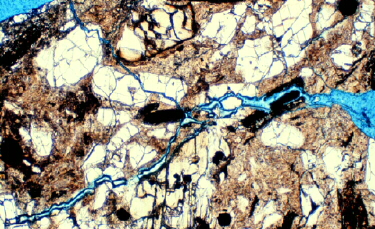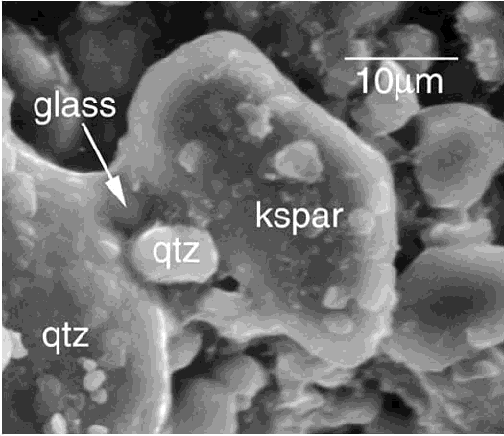
Regolith is continually produced and eroded at Seven Parks
REGOLITH PRODUCTION AND RESIDENCE TIME
The lack of defined stratification and structure in the regolith suggests the disaggregation and weathering processes are occurring in a continual process of denudation, as discussed by Stallard (1995). In essence, there is no well- defined point in time when bare bedrock began to form regolith or when the regolith began to be exported by transport processes.The well-preserved Creede caldera complex is in a region that has been undergoing rapid regional uplift for the last 5 to 6 My (Curtis, 1975). Given various geological constraints, a conservative estimate of physical erosion in the study area is around 10 m/My, or 10 mm/y, thus, a 1 m thick regolith profile has an average residence time or about 105y.





